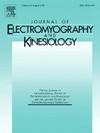用表肌电共收缩指数评估中风引起的上肢异常肌肉共激活:一项系统综述。
IF 2.3
4区 医学
Q3 NEUROSCIENCES
引用次数: 0
摘要
肌电图(Electromyography, EMG)在卒中评估研究中的应用越来越多,研究表明上肢肌肉的肌电共收缩(EMG- cc)可以将卒中患者与健康人区分开来,并与评估运动功能的临床量表相关。这表明肌电图- cc有潜力评估卒中患者的运动损伤和监测恢复情况。然而,缺乏对肌电- cc在卒中评估中的有效性的系统评价。为了解决这个问题,本研究旨在综合肌电- cc在评估中风引起的肌肉异常方面的最新证据。18项研究包括308名中风患者和155名健康对照者。18项纳入的研究中有15项使用肌电- cc成功区分了受影响上肢的异常肌肉共收缩表现,甚至在静态任务(等长最大自主收缩)和动态任务(运动导向或目标导向)中与未受影响的一侧进行了比较。肌电图- cc有望成为一种方便有效的工具,用于评估卒中后痉挛患者上肢异常肌肉协同激活的程度,以及评估康复干预的有效性。需要进一步的研究来验证这些发现,并建立肌电- cc在卒中评估中的标准化方案。本文章由计算机程序翻译,如有差异,请以英文原文为准。
Assessing stroke-induced abnormal muscle coactivation in the upper limb using the surface EMG co-contraction Index: A systematic review
Electromyography (EMG) is increasingly used in stroke assessment research, with studies showing that EMG co-contraction (EMG-CC) of upper limb muscles can differentiate stroke patients from healthy individuals and correlates with clinical scales assessing motor function. This suggests that EMG-CC has potential for both assessing motor impairments and monitoring recovery in stroke patients. However, systematic reviews on EMG-CC’s effectiveness in stroke assessment are lacking. To address this, the present study aims to synthesize recent evidence on EMG-CC’s use in evaluating stroke-induced muscle abnormality. Eighteen studies including a total of 308 stroke patients and 155 healthy controls were included. Fifteen out of Eighteen included studies used the EMG-CC to successfully differentiate abnormal muscle co-contraction performance of the affected upper limb, even in comparison to the unaffected side in static tasks (isometric maximal voluntary contractions) and dynamic tasks (movement-oriented or goal-oriented). The EMG-CC shows promise as a convenient and effective tool for evaluating the extent of abnormal muscle coactivation in the upper limbs of post-stroke patients with spasticity as well as assessing the effectiveness of rehabilitation interventions. Further research is needed to validate these findings and establish standardized protocols for EMG-CC’s use in stroke assessment.
求助全文
通过发布文献求助,成功后即可免费获取论文全文。
去求助
来源期刊
CiteScore
4.70
自引率
8.00%
发文量
70
审稿时长
74 days
期刊介绍:
Journal of Electromyography & Kinesiology is the primary source for outstanding original articles on the study of human movement from muscle contraction via its motor units and sensory system to integrated motion through mechanical and electrical detection techniques.
As the official publication of the International Society of Electrophysiology and Kinesiology, the journal is dedicated to publishing the best work in all areas of electromyography and kinesiology, including: control of movement, muscle fatigue, muscle and nerve properties, joint biomechanics and electrical stimulation. Applications in rehabilitation, sports & exercise, motion analysis, ergonomics, alternative & complimentary medicine, measures of human performance and technical articles on electromyographic signal processing are welcome.

 求助内容:
求助内容: 应助结果提醒方式:
应助结果提醒方式:


